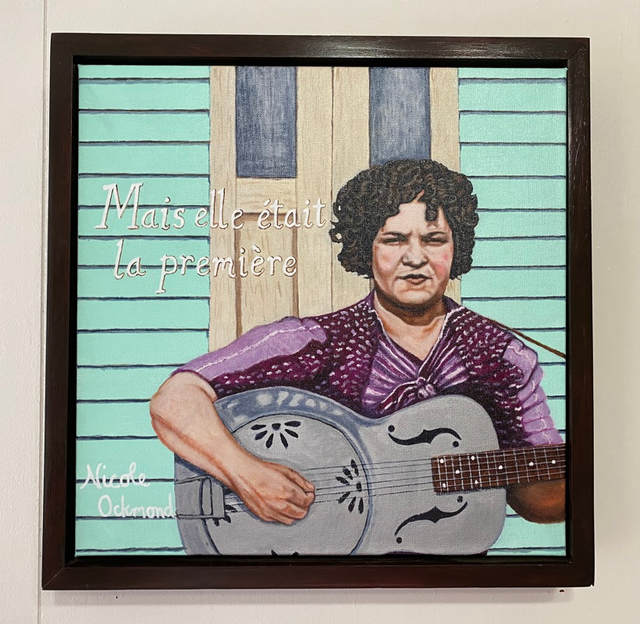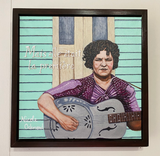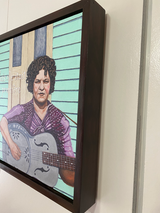- ORIGINALS
- >
- Louisiana Musicians
- >
- "Mais elle a était la première"" (but she was the first)
"Mais elle a était la première"" (but she was the first)
Here’s my portrait of Cléoma Breaux titled “Mais elle était la première” (but she was the first). I was first attracted to her cute face and killer national guitar and then I wanted to know more about her. Born in 1906 in Crowley, Louisiana, to an accomplished accordion player, Auguste Breaux & his wife Mathilde Breaux. Cléoma Breaux & her brothers Amedée, Orphy, and Clifford Breaux were all taught as multi-instrumentalists, & began performing for the family's entertainment. Cléoma Breaux was capable of playing a "hard" rhythm guitar style, which was closely related to the preferred technique of later bluegrass guitarists. In addition, Breaux was trained to play the fiddle and accordion. In 1917, Breaux's father abandoned the family, driving them into poverty so that the majority of their income was from performances at dance halls.
In the mid-1920s, Breaux was joined in performing by accordion player Joe Falcon. The two also began a relationship with each other & later married. In 1928 George Burrs hoped to capitalize on the group's popularity on the dance-hall circuit & negotiated a deal to record the trio which included vocalist Leon Meche. On April 27, 1928, the musical trio arrived at the recording company's satellite studio in New Orleans. Initially, record executives withdrew the offer because, as Falcon recalled, "They used to record with big orchestras. They looked at us & said that is not enough music to make a record". Nonetheless, Burrs convinced them otherwise and Breaux and Falcon, without Meche who was too nervous to perform, recorded a test of "Lafayette (Allons à Luafette)". The song was redone & released along with "The Waltz That Carried Me to My Grave". Not only did the recordings mark the first time Cajun music entered the music marketplace, but it was the first instance where a woman took part in the process.
Breaux was not credited on the recording but the novelty of a female musician in a male-dominated music scene enhanced the group's popularity on the dance-hall circuit. Luckily things have changed a bit and she is now credited. This is acrylic on canvas. I handmade the frame as well. The framed piece measures 17.5" x 18" x 3".


